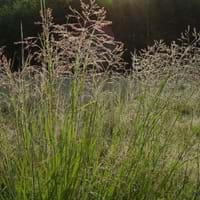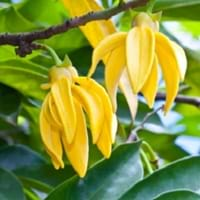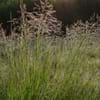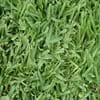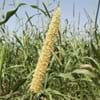Life Span
Perennial
Perennial
Origin
North America, Canada, Mexico, China
Southeastern Asia, India, Australia
Types
Not available
C. odorata var. fruitcosa (Craib) J. Sincl.
Habitat
All sorts of environments
Humid climates, Lowland
USDA Hardiness Zone
5-9
10-15
Sunset Zone
1a, 1b, 2a, 2b, 3a, 3b, 4, 5, 6, 7, 8, 9, 10, 11, 14, 15, 16, 17, 18, 19, 20, 21, 22, 23
H1, H2, 24
Habit
Upright/Erect
Oval or Rounded
Flower Color
Orange, Purple
Light Yellow
Flower Color Modifier
Bicolor
Bicolor
Fruit Color
Brown, Light brown
Black
Leaf Color in Spring
Blue Green, Steel Blue
Green, Light Green
Leaf Color in Summer
Light Green
Green
Leaf Color in Fall
Blue Green, Steel Blue
Green
Leaf Color in Winter
Tan, Sandy Brown
Green
Leaf Shape
Orbicular
Long Linear
Plant Season
Spring, Summer, Fall, Winter
Spring, Summer, Fall
Sunlight
Full Sun, Partial Sun
Full Sun, Partial Sun
Type of Soil
Clay, Loam, Sand
Loam, Sand
The pH of Soil
Acidic, Neutral, Alkaline
Acidic, Neutral, Alkaline
Soil Drainage
Average
Well drained
Bloom Time
Early Summer, Summer, Late Summer
Indeterminate
Tolerances
Pollution, Drought, Soil Compaction
Drought, Salt
Where to Plant?
Container, Ground, Pot
Ground
How to Plant?
Seedlings
Seedlings, Vegetative Reproduction
Plant Maintenance
Medium
Medium
Watering Requirements
Average Water Needs
Requires a lot of watering, Requires regular watering
In Summer
Lots of watering
Lots of watering
In Spring
Moderate
Average Water
In Winter
Average Water
Ample Water
Soil pH
Acidic, Neutral, Alkaline
Acidic, Neutral, Alkaline
Soil Type
Clay, Loam, Sand
Loam, Sand
Soil Drainage Capacity
Average
Well drained
Sun Exposure
Full Sun, Partial Sun
Full Sun, Partial Sun
Pruning
Remove damaged leaves, Remove dead branches, Remove dead leaves
Prune in winter, Prune to control growth
Fertilizers
All-Purpose Liquid Fertilizer
Fertilizer every month during spring
Pests and Diseases
Aphids, Rust, Spider mites
Healthy tree
Plant Tolerance
Drought
Drought, Salt
Flower Petal Number
Single
Single
Foliage Texture
Fine
Medium
Foliage Sheen
Matte
Glossy
Allergy
Scratches
Not Available
Aesthetic Uses
Not Available
Showy Purposes
Beauty Benefits
Not Available
Good for skin and hair, Perfumes
Environmental Uses
Air purification, Biodegradable plastics production, Soil conservation
Not Available
Medicinal Uses
Not Available
Antidepressant, Antiseborrhoeic, Antiseptic, Aphrodisiac, Nervine
Part of Plant Used
Not Available
Flowers
Other Uses
Animal Feed, Used to feed livestock
Oil is used for aromatherapy, Used as Ornamental plant
Used As Indoor Plant
No
Yes
Used As Outdoor Plant
Yes
Yes
Garden Design
Edging, Feature Plant, Foundation, Mixed Border, Wildflower
Cutflower, Feature Plant, Shade Trees, Street Trees, Tropical
Botanical Name
PANICUM virgatum 'Dallas Blues'
CANANGA odorata
Common Name
Dallas Blues Switchgrass, Switchgrass
Chanel No.5 Tree, Perfume Tree, Ylang-Ylang
In Hindi
Dallas Blues Grass
Ylang-Ylang
In German
Dallas Blues Grass
Ylang-Ylang
In French
Dallas Blues Grass
Ylang-Ylang
In Spanish
Dallas azules Hierba
Ylang-Ylang
In Greek
Dallas Blues Grass
Ylang-Ylang
In Portuguese
Dallas azuis da grama
Ylang-Ylang
In Polish
Dallas Blues Grass
Jagodlin
In Latin
Dallas Blues Grass
Ylang-Ylang
Phylum
Magnoliophyta
Spermatophyta
Class
Liliopsida
Dicotyledonae
Family
Poaceae
Annonaceae
Clade
Angiosperms, Commelinids, Monocots
Angiosperms, Magnoliids
Tribe
Not Available
Not Available
Subfamily
Panicoideae
Not Available
Number of Species
Not Available
Season and Care of Dallas Blues Grass and Ylang-Ylang
Season and care of Dallas Blues Grass and Ylang-Ylang is important to know. While considering everything about Dallas Blues Grass and Ylang-Ylang Care, growing season is an essential factor. Dallas Blues Grass season is Spring, Summer, Fall and Winter and Ylang-Ylang season is Spring, Summer, Fall and Winter. The type of soil for Dallas Blues Grass is Clay, Loam, Sand and for Ylang-Ylang is Loam, Sand while the PH of soil for Dallas Blues Grass is Acidic, Neutral, Alkaline and for Ylang-Ylang is Acidic, Neutral, Alkaline.
Dallas Blues Grass and Ylang-Ylang Physical Information
Dallas Blues Grass and Ylang-Ylang physical information is very important for comparison. Dallas Blues Grass height is 120.00 cm and width 60.00 cm whereas Ylang-Ylang height is 910.00 cm and width 370.00 cm. The color specification of Dallas Blues Grass and Ylang-Ylang are as follows:
Dallas Blues Grass flower color: Orange and Purple
Dallas Blues Grass leaf color: Blue Green and Steel Blue
Ylang-Ylang flower color: Light Yellow
- Ylang-Ylang leaf color: Green and Light Green
Care of Dallas Blues Grass and Ylang-Ylang
Care of Dallas Blues Grass and Ylang-Ylang include pruning, fertilizers, watering etc. Dallas Blues Grass pruning is done Remove damaged leaves, Remove dead branches and Remove dead leaves and Ylang-Ylang pruning is done Prune in winter and Prune to control growth. In summer Dallas Blues Grass needs Lots of watering and in winter, it needs Average Water. Whereas, in summer Ylang-Ylang needs Lots of watering and in winter, it needs Ample Water.
